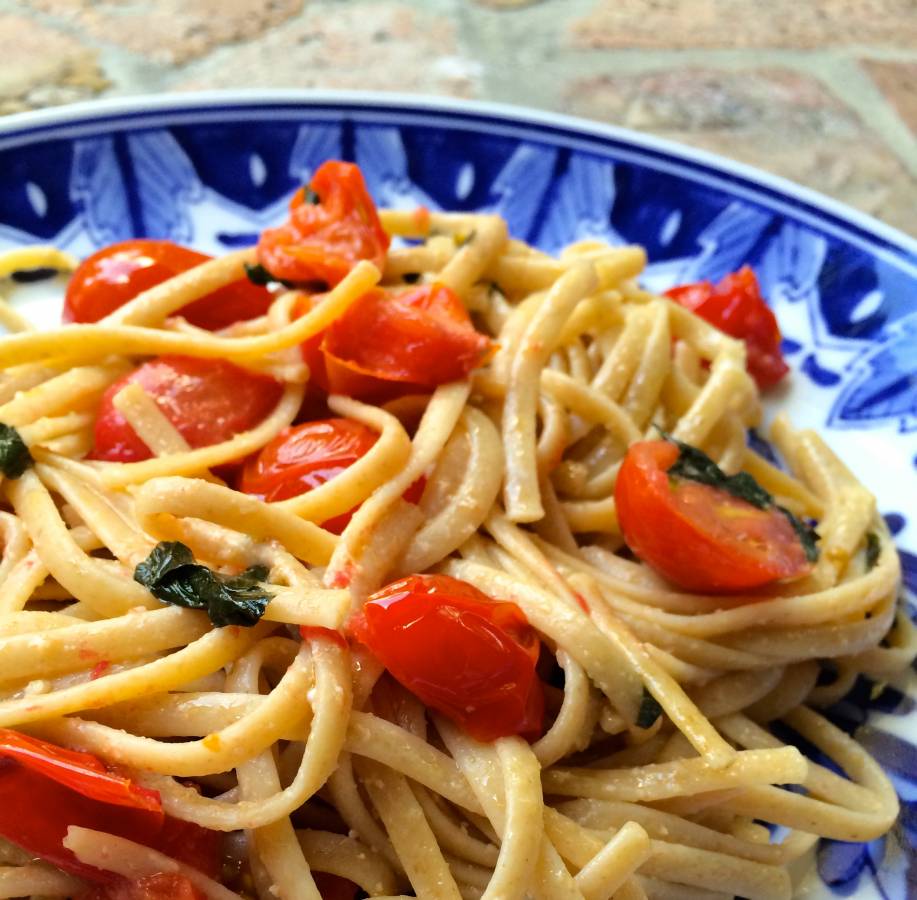
:max_bytes(150000):strip_icc()/buttered-herb-pasta-recipe-481984-Step_5-5bafa71746e0fb00266333ea.jpg)

If not, turn off the heat about two or three minutes before the cooking duration it does provide. Most pasta packages will provide cooking times for cooking al dente noodles. That’s a good sign that it’s time to stop cooking.Īfter all, al dente means “to the tooth” in Italian. If you cut it one half, you might see that’s it not as hydrated in the center. The perfect al dente noodle should be mostly chewy but with a little resistance and be slightly firm in the center. Additionally, if you’re cooling the cooked pasta to make pasta salad, cook the noodle just past al dente status to soak up more of the dressing. If you’re boiling the noodles to add them to a casserole like a classic lasagna that will continue cooking the oven, stop cooking when they’re al dente. If you’ve made fresh pasta noodles, you may only need to boil for a minute or two, sometimes three. However, start checking it after four minutes because it can vary based on the size of the noodle. Plan on cooking your dry noodles anywhere from 8 to 10 minutes, depending on the type of pasta. However, because some of those surface starches from the noodles will begin to release immediately, noodles can stick together and to the sides of your pot if you don’t stir them.
#PLAIN PASTA FULL#
As long it reached a full boil prior, it should quickly heat back up to a boil before your noodles are in danger of getting mushy. Once you do add the pasta noodles to your pot, the water temperature will drop slightly. Stir the water when you first add the noodles This helps the noodle maintain more structure and not get too soft and mushy. When the outside sets, the center of the noodle will absorb the water and rehydrate rather than burst and release like the surface starches. When the water is boiling, the noodles’ surfaces will cook quicker and allow them to set. You can’t see it happening, but they’re being rehydrated and will eventually burst into the water. Why does it matter so much? The starches on the surface of the noodles will begin to fill with water right away. Always resist the urge to add the pasta to the pot too soon. While it seems harmless to add the noodles to the pot before the water reaches a boil, it can lead to mushy noodles. Always bring the water to a complete boil My starting rule of thumb is to add 1 tablespoon of salt for every 4 quarts (16 cups) of water. The noodles absorb the flavor of the salt, not the sodium content. Without it, you rely solely on the ingredients mixed into your pasta dish to bring the flavor.Īnd don’t worry about the sodium. The boiling process is your first and only opportunity to add flavor to the noodles themselves. Add it to the boiling water - and not a second before it boils because salted water takes longer to reach a boil. But remember, the more water you have, the more salt you’ll need. It ensures long, thin noodles like spaghetti can submerge fully right away. Many chefs prefer an extra deep pot to boil pasta. Small pot, large pot, dutch oven - it all depends on what you’re making and how much of it. You can certainly boil water and throw in the noodles without another thought, but a few simple tweaks could take your at-home pasta dishes to restaurant quality in a pinch. For example, adjusting how much salt you add is a game-changer. There are so many possibilities it’s no wonder so many weeknight dinners start with noodles.īut for how simple it is, made of nothing more than eggs, flour, and sometimes water, there is an art to cooking it. Pasta is such a simple ingredient, pairing well with just about any spice, flavor, or protein you can name. These are just a few pasta dish hall-of-famers. But you might be missing out on some cooking secrets that can sweeten the deal.Ĭarbonara.
#PLAIN PASTA HOW TO#
Everyone thinks they know how to cook pasta.


 0 kommentar(er)
0 kommentar(er)
